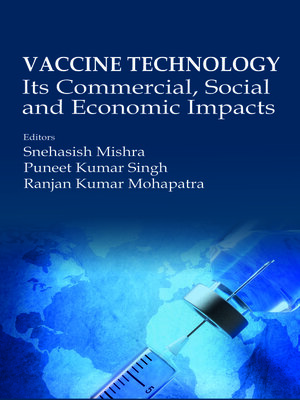
Sign up to save your library
With an OverDrive account, you can save your favorite libraries for at-a-glance information about availability. Find out more about OverDrive accounts.
Find this title in Libby, the library reading app by OverDrive.



Search for a digital library with this title
Title found at these libraries:
| Library Name | Distance |
|---|---|
| Loading... |
Vaccines act as a cornerstone of public health and form an essential defence against infectious diseases. Vaccines have played a crucial role in eradicating diseases such as smallpox over the past two centuries and have significantly reduced the impact of polio, highlighting their essential role in combating vaccine-preventable infectious diseases. As the most potent defence to prevent the rapid spread of pathogens and mitigate the severity of outbreaks, vaccines effectively manage pandemics. Vaccinology has evolved greatly with time, especially during the recent pandemic. This Edited Volume of the compiled chapters is a thorough exploration of the various aspects of vaccinology, its historical evolution, current advancements, the socioeconomic implications and future directions. The work traces the history of vaccination, from the early variolation techniques to the cutting-edge molecular platforms, illustrating the profound effect of biotechnological progress on vaccine development. COVID-19 pandemic served as a triggering point to showcase the global collective strength and expedited the unprecedented global efforts to design, develop and deploy vaccines in alarming situations. The chapters highlight the rapid evolution of vaccine technologies during the pandemic, with mRNA vaccines emerging as a transformative tool. Many authorised mRNA vaccines to combat SARS-CoV-2 demonstrated remarkable flexibility and efficacy, opening new vistas to address other neglected and reemerging diseases. The technical challenges of mRNA vaccine production including issues surrounding storage, delivery mechanisms, and equitable distribution, especially in low- and middle-income countries are also covered. In addition to the technical advancements, the work examines the challenges in mRNA vaccine production, like the logistics challenges of storage, delivery and equitable distribution in resource-limited areas. Supported by artificial intelligence (AI) and machine learning (ML), reverse vaccinology is revolutionising and accelerating antigen discovery by squeezing the vaccine development timeline. AI and ML facilitate identifying novel antiviral candidates by using bigdata that is essential to timely and effectively counter the mutating pathogens like SARS-CoV-2. Vaccination campaigns protect the vulnerable population by promoting herd immunity and reduce strain on the healthcare systems. The chapters underscore the need for timely vaccine development and deployment as critical to reduce the socioeconomic impact of pandemics and safeguarding the global public health. The chapters collection also delves into the One Health paradigm that emphasises the interconnectedness of human, animal and the environmental health to address zoonotic and reverse zoonotic diseases which are becoming more prevalent. This holistic approach expands vaccination strategies to encompass animals, particularly the disease reservoirs, and stresses the need for a coordinated, equitable vaccination effort for human and animal populations to prevent future pandemics.The socioeconomic impacts of vaccination are analysed in detail, highlighting its role in reducing the healthcare and hospitalisation costs, and saving precious lives. Despite these advantages, challenges such as vaccine hesitancy, misinformation and inequitable access continue to persist. The chapters explore the disparities between high-income and low- and middle-income countries in vaccine access, advocating for scalable production models and global distribution strategies to ensure broader immunisation coverage. The benefits of booster dose are assessed in light of waning immunity and emerging viral variants. The influence of stimuli like circadian...







